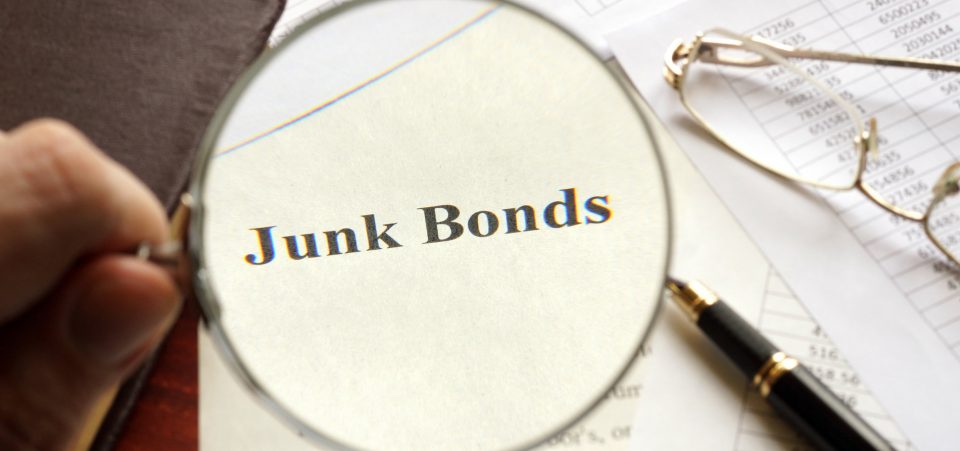Key Stock Market Indicator
Rising yields have prompted many market analysts, hedge fund managers, and big investors to pay attention to the bond market. There is a sense that the key stock market indicator of 2018 will, in fact, be the performance of high-yield bonds—also known as junk bonds. The fact that high-yield bonds have kept much of their value despite the sell-off in stocks on “Black Monday” 2018 has quelled investor fears of inflation. (Source: “Investors are watching this key indicator to see if the stock rout will screech to a halt,” MarketWatch, February 6, 2018.)
In other words, the suggestion appears to be the following. If stocks start falling in price, the way to predict how deep and long the correction—or whether we’re even dealing with a correction—is to observe how high-yield bonds are performing. If the latter high-risk instruments retain their value, it points to a prompt recovery. That’s how some are explaining Wall Street’s rapid recovery.
Stock Market Collapse 2018
On February 5, the Dow Jones Industrial Average (DJIA) suffered the biggest single-day loss in history. Such losses normally increase the level of risk in the bond markets. In other words, investors demand more reward for buying riskier debt instruments. The higher the risk, the higher the yield spread. The key factor is that spreads on February 5 only rose by 25 basis points, moving from 3.23 to 3.52. That still implies an acceptable level of risk and it took investors by surprise, given fears of a bond market crash. (Source: Ibid.)
The idea behind this latest of stock market correction indicators is that if junk bonds don’t crash, it means that the market does not expect the Federal Reserve to raise interest rates. The higher the inflation concerns, the higher the chance of the Fed lifting rates. This may be the most important stock market correction indicator now.
The bigger the yield spread, the bigger the chance of a major stock market correction. The problem is that this may work once, maybe even twice. But it won’t make the problem go away. The risk of a rapid rise in inflation is what worries most investors now. It’s a problem that stems directly out of the Trump tax cuts.
Normally, central banks and government Treasuries encourage tax stimulus and low interest rates to stimulate economic growth. In the United States, economic growth—uneven as it might be—was not a problem. Gross domestic product (GDP) has risen to a respectable three percent—if not even a little more.
Stock Market Contrarian Indicator
Granted, it’s not ideal to measure economic strength solely on GDP. But it’s an easy-to-understand statistic that’s widely used. That said, 2018 promises to give investors a bumpy ride. The inflation concerns—and related yield and risk spread fears—will have everyone on edge, any time spreads widen. The Fed could raise the nominal interest rate as early as next March after its March meeting.
Investors will be jittery and careful to read growth expectations. The tax reform, in theory, should lead to higher GDP/growth estimates because of the tax reform. If investors were told to expect three rate hikes in 2018, they will now be expecting four. That’s where the “stock market contrarian indicator” enters the picture.
It’s contrarian for the following reason. For stocks to continue pushing the boundaries of reality, as they have done for over a year now, the overall economy must underperform. In other words, it’s best for the economy to grow slowly or not to grow at all to prevent a stock collapse. Indeed, low growth could even prompt the Fed to avoid raising rates altogether.
The Paradox of Growth
As for the rate hikes themselves, they pose their own set of dangers. Even if the economy and employment are growing, many Americans remain under pressure from personal debt in the form of car loans, mortgages, or credit cards. Raising rates in the face of inflation—or the perception thereof—could end up causing a paradoxical slowdown in the employment growth rate and rising prices. Together, of course, these are dangerous stock market crash indicators.
Ultimately, it would have been best for Trump to delay his tax reform. Or it would have been better to limit the reform to help only the neediest Americans. Fiscal stimulus and interest rate stimulus rarely come together in a period of fast growth. Those are tools to jump-start an economy out of depression. The European Union, for example, is also seeing strong growth, but the European Central Bank (ECB) is not planning any interest rate hike yet because the rate of inflation remains far from its targets.






